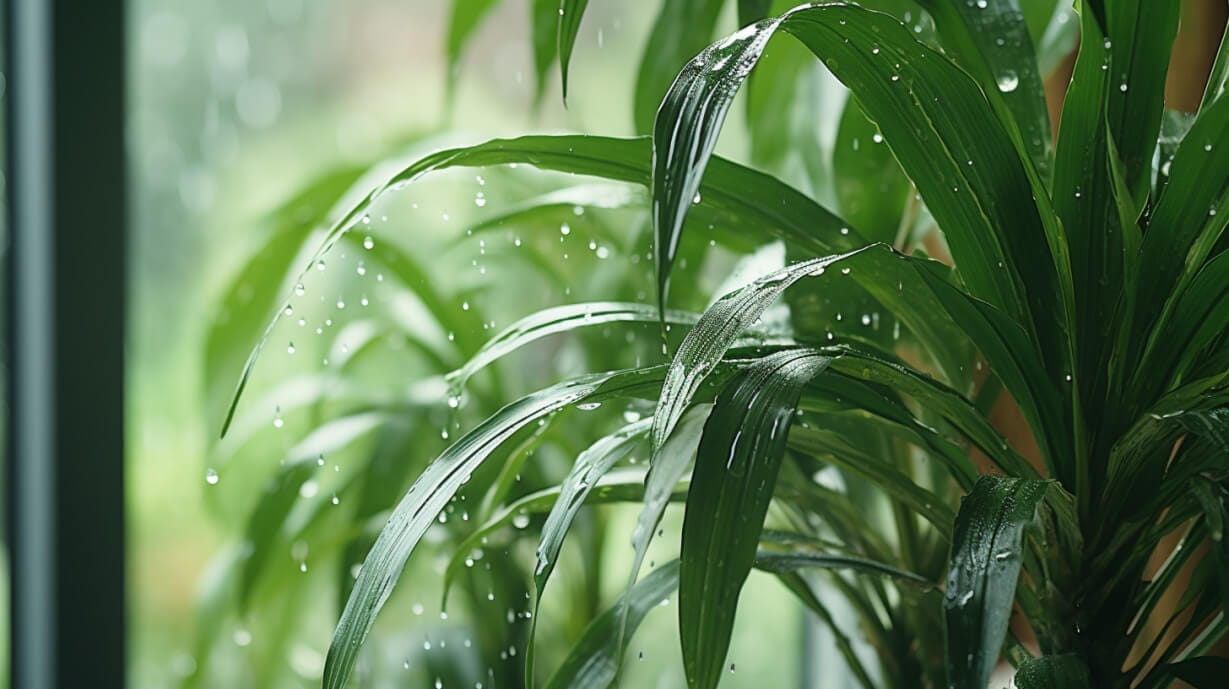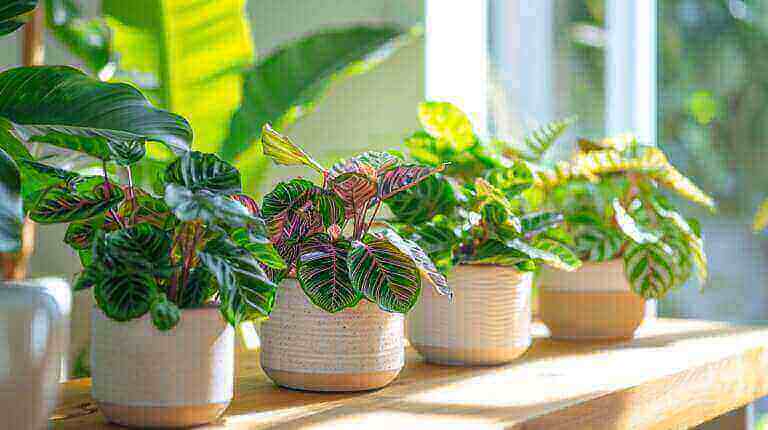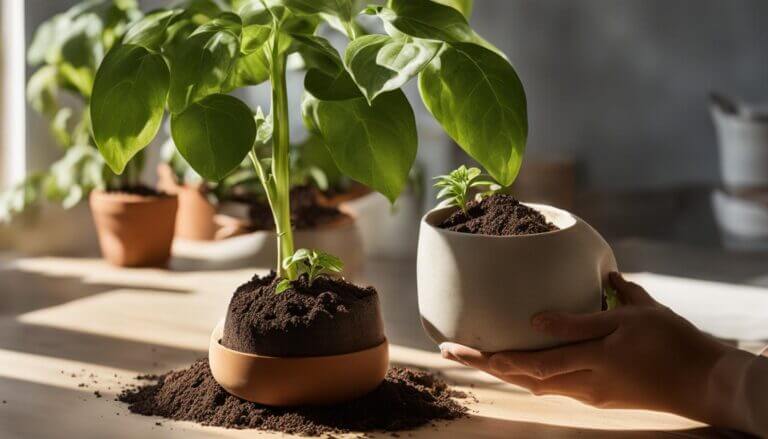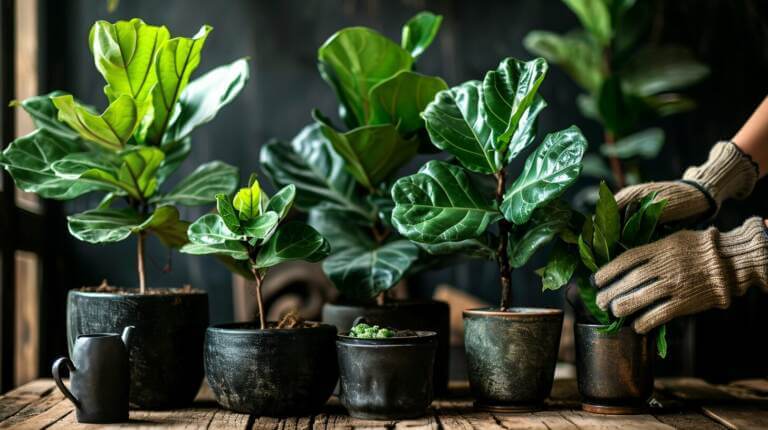How Often to Water Dracaena Indoor Houseplants to Prevent Overwatering
Proper watering is crucial for the well-being of your dracaena houseplant. By following the recommended watering guidelines, you can prevent overwatering and ensure your plant thrives.
Key Takeaways:
- Dracaena houseplants should be watered when the top 1-2 inches of soil is dry.
- Avoid overwatering as dracaena plants prefer dry conditions.
- Use a moisture meter or check the soil with your finger to determine when to water.
- Pour water onto the soil and allow it to soak in, then drain any excess water after about 30 minutes.
- Filtered or distilled water is recommended to avoid fluoride salts, which dracaena plants are sensitive to.
- Proper drainage is essential to prevent root rot.
- Misting the leaves a few times a week can help increase humidity.
How to Determine When to Water Your Dracaena
Understanding when to water your dracaena is crucial for maintaining its health and preventing overwatering. By paying attention to certain indicators and considering its water requirements, you can ensure your dracaena receives the right amount of water at the right time.
One of the easiest ways to determine when to water your dracaena is to check the moisture level of the soil. Dracaena houseplants should be watered when the top 1-2 inches of soil feels dry to the touch. You can use a moisture meter or simply stick your finger into the soil to gauge its dryness. If the soil feels moist or damp, it’s best to wait before watering again.
In addition to soil moisture, there are a few other signs that can indicate your dracaena needs water. Wilting or drooping leaves, especially those at the bottom of the plant, can be a sign of dehydration. Yellowing or browning of the lower leaves may also indicate insufficient watering. However, it’s important to note that dracaena plants prefer drier conditions and can tolerate slight drought, so it’s better to underwater than overwater.
When it’s time to water your dracaena, pour the water directly onto the soil around the plant, allowing it to soak in. Avoid watering the leaves as this can lead to disease and fungal issues. After the water has had a chance to penetrate the soil, any excess water should be drained away. This can be done by tipping the pot to let the water run out or using a saucer to catch and remove excess water after about 30 minutes.
| Indicator | What It Means |
|---|---|
| Moist soil | Wait to water |
| Dry soil | Time to water |
| Wilting or drooping leaves | Sign of dehydration |
| Yellowing or browning of lower leaves | Insufficient watering |
Proper Watering Techniques for Dracaena Houseplants
Dracaena houseplants require proper watering techniques to maintain their health and vitality. By adjusting your watering routine, allowing excess water to drain, and ensuring thorough watering, you can keep your dracaena species healthy.
To determine when to water your dracaena, it’s important to check the moisture level of the soil. Stick your finger about 1-2 inches deep into the soil; if it feels dry at this depth, it’s time to water. Alternatively, you can use a moisture meter to accurately measure the soil’s moisture content.
When watering your dracaena, pour water onto the soil rather than directly onto the leaves. This allows the water to reach the roots where it’s needed the most. Water until you see it starting to come out of the drainage holes at the bottom of the pot. After about 30 minutes, make sure to drain any excess water from the saucer or tray to prevent the roots from sitting in standing water.
It’s important to note that different dracaena species may have slightly different watering needs. For example, the dracaena marginata, also known as the snake plant, prefers drier conditions and should not be watered as frequently as other dracaena species. It’s always a good idea to research the specific watering requirements of your dracaena plant to ensure you are providing the best care.
| Watering Tips for Dracaena Houseplants |
|---|
| Adjust your watering routine based on the moisture level of the soil. |
| Allow excess water to drain from the pot after watering. |
| Water thoroughly, ensuring the water reaches the roots. |
| Research the specific watering needs of your dracaena species. |
In addition to watering, misting the leaves of your dracaena houseplant a few times a week can help increase humidity, which is beneficial for these tropical plants.
Water Quality for Dracaena Houseplants
Providing the right water quality is vital for the optimal growth of your dracaena houseplants. By understanding the type of water your dracaena needs, checking the soil moisture, and considering the impact on leaf tips, you can ensure your indoor plant thrives.
When it comes to watering your dracaena, using filtered or distilled water is recommended. These types of water are free from fluoride salts, which dracaena plants are sensitive to. By avoiding tap water that may contain these salts, you can prevent potential leaf damage and ensure your plant stays healthy.
Soil moisture is another crucial factor to consider when watering your dracaena. Before watering, check the top 1-2 inches of soil with your finger or a moisture meter. If the soil feels dry at this depth, it’s time to water. However, if it still feels moist, hold off on watering to prevent over-saturation.
In addition to water quality and soil moisture, it’s important to pay attention to the impact on leaf tips. If you notice the tips turning brown or crispy, it could be a sign of overwatering. Adjust your watering routine to avoid pouring too much water onto the leaves, as excess moisture can lead to leaf damage. Instead, focus on pouring water onto the soil and allowing it to soak in.
Table: Watering Tips for Dracaena Houseplants
| Watering Tip | Description |
|---|---|
| Use filtered or distilled water | Avoid tap water that may contain fluoride salts |
| Check soil moisture | Water when the top 1-2 inches of soil is dry |
| Avoid pouring water onto leaves | Focus on watering the soil instead |
| Ensure proper drainage | Allow excess water to drain after 30 minutes |
| Mist the leaves | Increase humidity by misting a few times a week |
Following these water quality guidelines and considering the moisture levels of the soil and impact on leaf tips will contribute to the overall health and thriving growth of your dracaena houseplants. Remember, each plant’s watering needs may vary, so it’s essential to observe and adjust accordingly to create an ideal environment for your indoor plants to flourish.
The Importance of Proper Drainage and Prevention of Root Rot
Proper drainage is crucial to prevent root rot and maintain the health of your dracaena. Understanding the preferred moisture levels, signs of overwatering, and the importance of allowing excess water to drain will help keep your plant thriving.
Dracaena plants prefer slightly dry conditions, so it’s important not to overwater them. Water your dracaena every 10-14 days or when the top 1-2 inches of soil feels dry to the touch. You can also use a moisture meter to accurately determine the soil’s moisture level. This will prevent you from giving your plant too much water, which can shock the roots and lead to root rot.
When it’s time to water, pour the water onto the soil and allow it to soak in. After about 30 minutes, check if there is any excess water in the saucer or pot. If there is, make sure to drain it to prevent the roots from sitting in standing water, as this can suffocate the roots and promote the growth of harmful bacteria.
One way to ensure proper drainage is to use a pot with drainage holes. This allows excess water to escape and prevents water from pooling at the bottom of the pot. Additionally, using filtered or distilled water is recommended to avoid fluoride salts, which dracaena plants are sensitive to.
Signs that Your Dracaena May be Overwatered:
- Yellowing or wilting leaves
- Roots turning brown or mushy
- Foul odor coming from the soil
- Growth of mold or fungus on the soil surface
To increase humidity around your dracaena, you can also mist the leaves a few times a week. This can help prevent the tips of the leaves from browning and drying out. With proper drainage and watering practices, your dracaena will flourish and add beauty to your indoor space.
| Preferred Moisture Levels: | Signs of Overwatering: | Prevention Tips: |
|---|---|---|
| Slightly dry soil | Yellowing or wilting leaves | Water every 10-14 days |
| Use a moisture meter | Roots turning brown or mushy | Allow excess water to drain |
| Avoid overwatering | Foul odor from soil | Use pots with drainage holes |
Additional Tips for Watering Dracaena Houseplants
To ensure the optimal growth and well-being of your dracaena houseplant, it’s important to follow some additional tips for watering. By taking care to adjust watering, repot when needed, and providing the right care, your plant will thrive in its environment.
Firstly, it’s crucial to understand that dracaena plants need less water compared to many other houseplants. They prefer dry conditions, so it’s best to water them when the top 1-2 inches of soil feels dry. You can use a moisture meter or simply stick your finger in the soil to determine if it’s time to water.
When watering your dracaena, pour the water directly onto the soil and allow it to soak in. After about 30 minutes, make sure to drain any excess water from the pot. Proper drainage is essential to prevent root rot, so avoid letting your plant sit in standing water.
In terms of water quality, it’s recommended to use filtered or distilled water for your dracaena houseplants. These plants are sensitive to fluoride salts, which can be found in tap water. By using filtered or distilled water, you can ensure that your plant receives the right amount of water without any harmful substances.
In addition to regular watering, misting your dracaena’s leaves a few times a week can help increase humidity, especially in drier environments. This mimics their natural habitat and promotes healthier foliage. Just be careful not to give your plant too much water, as excessive moisture can lead to problems like leaf rot.
By following these additional tips for watering your dracaena houseplants, you can prevent overwatering, promote healthy growth, and enjoy the beauty of these stunning plants in your home.
FAQ
How often should I water my dracaena houseplant?
Dracaena houseplants should be watered when the top 1-2 inches of soil is dry.
How can I determine when to water my dracaena?
You can use a moisture meter or stick your finger in the soil to check for dryness. Signs of wilting or drooping leaves may also indicate it’s time to water.
What is the best way to water my dracaena plant?
Pour water onto the soil and allow it to soak in. After about 30 minutes, drain any excess water from the drainage holes.
Should I use filtered or distilled water to water my dracaena plants?
Yes, using filtered or distilled water is recommended to avoid fluoride salts, which dracaena plants are sensitive to.
Why is proper drainage important for dracaena houseplants?
Proper drainage helps prevent root rot, so it’s important to ensure excess water can drain from the pot.
Should I mist the leaves of my dracaena houseplant?
Misting the leaves a few times a week can help increase humidity, which is beneficial for dracaena plants.
How do I prevent overwatering my dracaena plant?
Avoid overwatering by only watering when the soil is dry, using proper drainage, and not giving the plant more water than it needs.







